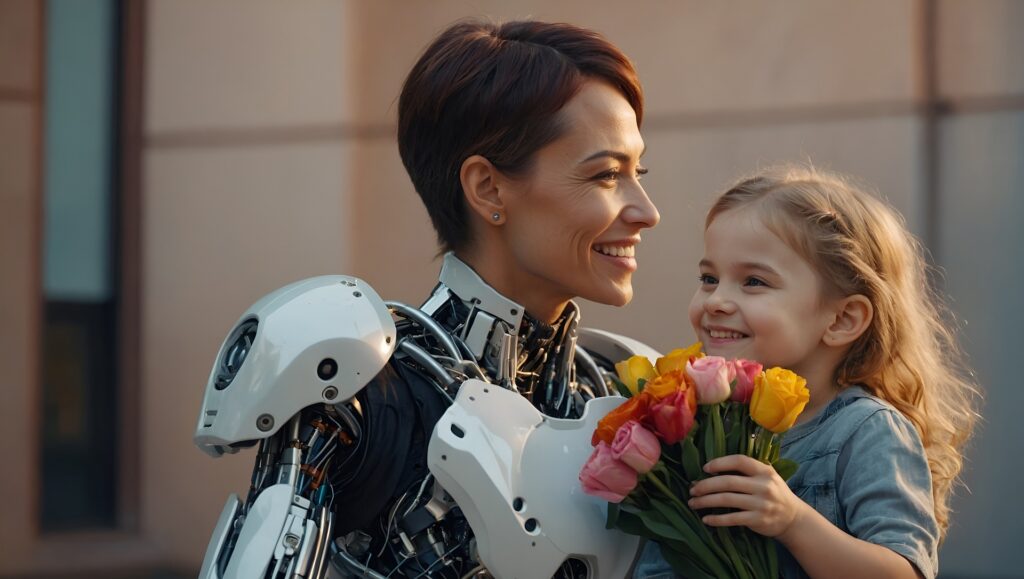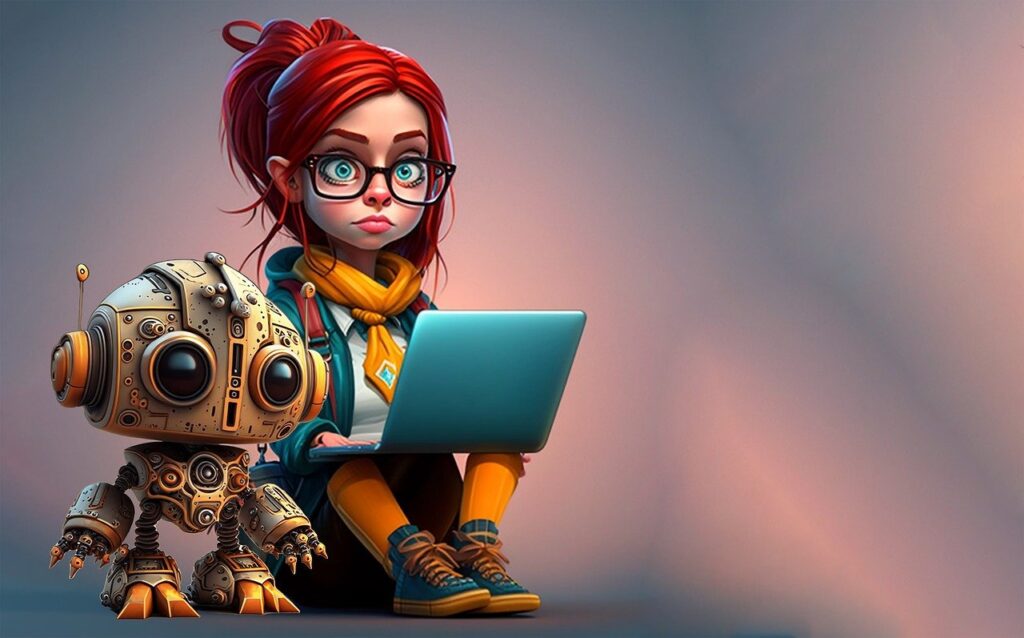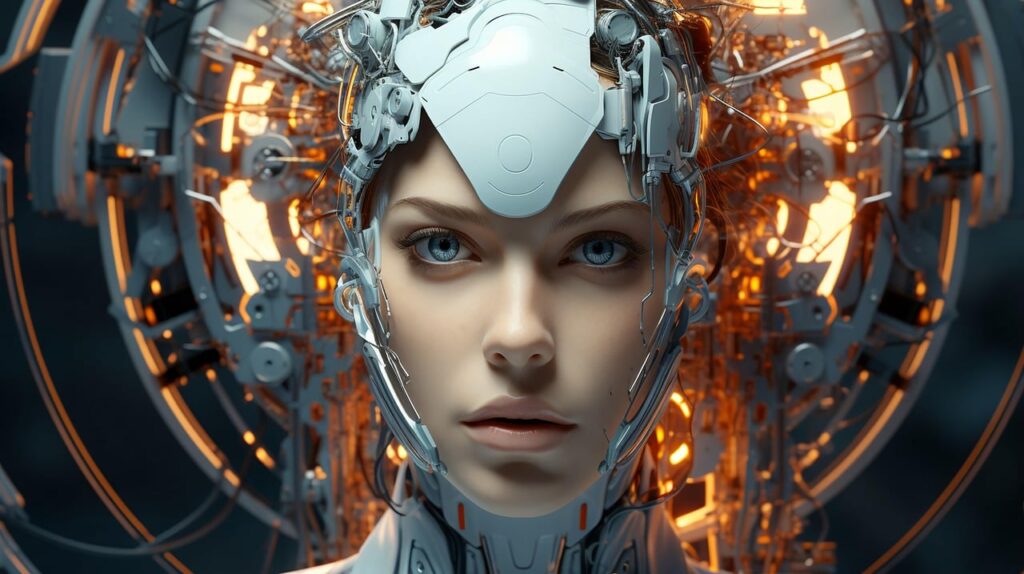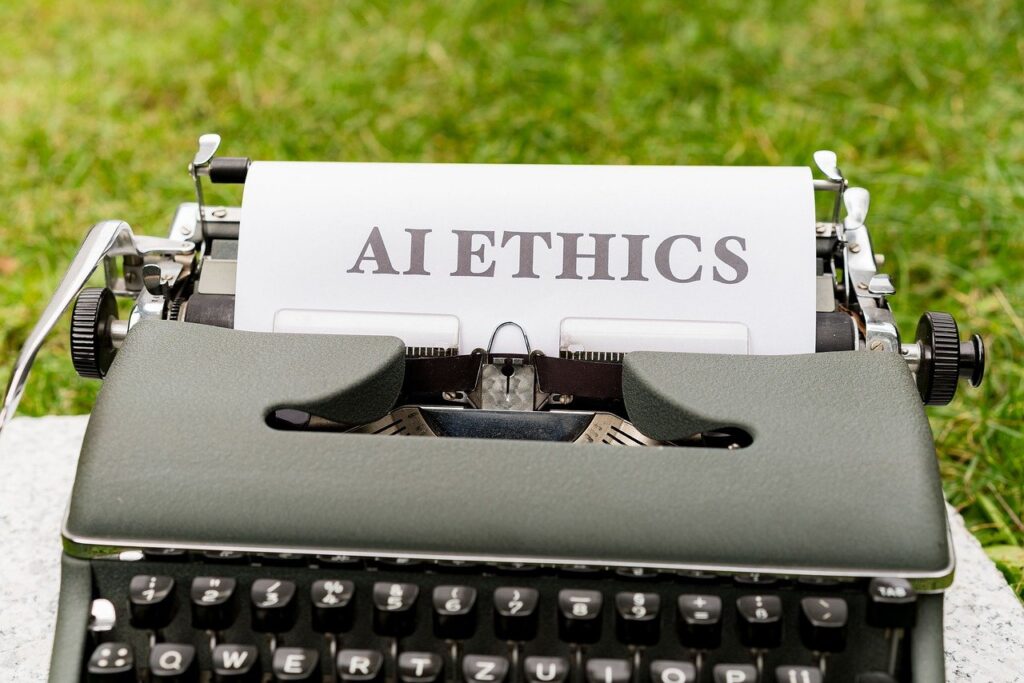Hello, my fellow mom tribe! Whether you’re rocking the stay-at-home mom life, juggling work and family like a boss, or building your entrepreneurial empire one brick at a time, you know the daily hustle is real. We’re all in this crazy, beautiful journey of motherhood together. We’ve all witnessed the profound impact of AI on our lives — from our jobs and businesses to the AI-powered apps and tools we carry in our pockets. While AI’s integration can be overwhelming, it also presents exciting opportunities for growth and innovation.

What is AI, and Why the Fuss?
AI, or Artificial Intelligence, is modeled after the human brain — how we gather facts, descriptions, comments, images, and more, and make sense of it all to accomplish specific tasks. What’s different is that AI consolidates this input, sorts it out, and makes it available to us at once. However, it does not have the capacity to connect new information with our lives, as human knowledge does.
AI technology has been in development since the mid-1950s, but recent breakthroughs have made AI-driven tools an integral part of our everyday lives. For example, when you contact customer service, AI might help answer your questions. Generative AI goes a step further by creating content that was once entirely produced by humans, such as producing images, generating reports, or even composing music.
Artificial Intelligence: How Kids are Using It

Children use artificial intelligence almost daily, according to UNICEF (https://www.unicef.org/globalinsight/stories/how-artificial-intelligence-ai-affecting-children). Almost all interactive toys, games, and platforms for children use artificial intelligence. Even though AI is rapidly advancing, most nations have not yet considered how it will affect children’s well-being.
Personal Experience: The YouTube Algorithm’s Influence
Let me share a personal experience to illustrate the impact of AI on our kids. One day, my 9-year-old son and I were researching map drawing for a school project. We watched a few YouTube tutorials, completed the assignment, and called it a day. However, the algorithm immediately flooded our feed with map-drawing videos, and my son started following numerous cartography channels. Within just two months, he became a cool “cartographer in the making,” creating stunning outlines of countries. Have a look at my son’s YouTube channel where he has proudly displayed his drawings: https://youtube.com/shorts/ZH8pXtxYP3s?si=OKGhRu427mTV5apY.
While I’m glad he picked up a new skill, this experience made me realize the power of algorithms in shaping our children’s interests and behaviors, often without parental supervision. What if the recommendations had been less desirable? This is the concern — AI has slowly crept into every aspect of our lives, consuming our kids’ preferences and molding their likes and dislikes, changing their behavior patterns.
The Pros and Cons of AI for Children
The Artificial Intelligence Alliance (https://www.artificialintelligencealliance.org/blog/ai-in-education/) emphasizes how AI can provide tailored support for kids with special needs or learning disabilities. However, there are valid concerns about how AI may impact children’s social-emotional development, privacy, and online safety.
1. Spreading Hate, Bias, and Stereotypes
Because AI “learns” from everything on the internet, AI platforms can reflect the same prejudices that threaten to divide and alienate us. Extensive studies show that AI-generated content can advance stereotypes and falsehoods. We’ve got to be ready to talk about what our kids are seeing online and how it could reinforce negative beliefs and behavior.
2. Oversharing Personal Information
Young children may share personal information with AI platforms without understanding the implications. Many AI-powered devices and applications are designed to be highly interactive and conversational, which can make children feel comfortable sharing details about themselves or their families. However, kids may not fully grasp the concept of privacy or the potential risks of sharing sensitive information online. Moreover, some AI platforms may collect and store data shared by children, which raises concerns about data privacy and the potential misuse of this information. As parents, it’s crucial to educate children about the importance of protecting personal information and setting boundaries for what can be shared online or with AI platforms. Supervision and clear guidelines are essential to ensure that children understand the implications of oversharing and develop a responsible approach to interacting with AI technologies.
3. Humanizing AI

Children may assume AI platforms are a lot like people, leading to unrealistic expectations or emotional attachments. Kids have a natural tendency to humanize things, so when they interact with AI assistants or chatbots designed to mimic human speech and responses, they can start to think of them as actual people or friends. This can be problematic because AI, no matter how advanced, is still just a program without genuine emotions or the ability to form real connections. If kids develop feelings for an AI and expect it to reciprocate emotions or understand them on a deeper level, they may end up feeling disappointed or even betrayed when the AI can’t meet those expectations.
4. Targeted Marketing
AI follows our online activities, making note of our likes and serving us more of the same. Your child’s search history may make them the target of relentless ad campaigns you would prefer they not see. I suggest all parents read this book called “Childhood Under Siege” (check book here – https://amzn.to/3UNJqVn). This book talks about how marketers target children with increasingly devious methods to manipulate their vulnerable emotions, cultivate compulsive behavior, and addle their psyches with violence, sex, and obsessive consumerism.
How to Safeguard Your Children from the Ill-Effects of AI
We’ve seen how social media has already impacted our kids’ attention spans, and AI is still in its infancy. It’s always safer to maintain a safe space for children when it comes to AI.
1.Talk About Benefits and Risks :
Have open conversations with your kids about the advantages and potential drawbacks of AI, fostering critical thinking and awareness.Teach them to ask questions about the AI tools they use. For instance, “Who made this app?” or “Why is this ad showing up for me?” Help them learn how to evaluate the reliability of information, whether it’s from an AI tool or the internet. For example, they should check if the information comes from a trusted source.
2. Explore AI Together
Keep track of educational websites your kids have been introduced to, and navigate them together before allowing full access. I’ve personally used and recommended some child-friendly websites in this blog post: “Best Educational Websites for Kids in 2024 – Mom Approved.”Check link here: https://momsyncs.com/category/blog/education/
3.Discuss Bias in Tech
Encourage kids to be critical thinkers and always question the output given by AI, as it may reflect biases or inaccuracies.If they are slightly older children discuss how bias in AI can affect real-world decisions, such as in hiring processes, loan approvals, or law enforcement.Encourage them to always ask questions about the information they receive from AI. “Who created this AI?” “What data was it trained on?” “Could this information be biased?”. By fostering this critical mindset, you’re empowering your kids to navigate the digital world thoughtfully and responsibly, recognizing that AI, like any tool, has limitations and potential pitfalls.
4. Address Plagiarism and Cheating
Talk about the importance of original work and the ethical implications of using AI for academic assignments. Explain that plagiarism is copying someone else’s work and presenting it as your own without giving credit. Few practical tips for moms for moms :
Use AI as a Tool, Not a Crutch: Teach them to use AI for inspiration and assistance, but not to rely on it to do the work for them. For example, they can use AI to gather information or brainstorm ideas, but they should write the content themselves.
Cite Sources Properly: Show them how to give credit to sources they use, including AI tools. For instance, if they use an AI tool to generate ideas, they should mention this in their work.
Check for Plagiarism: Encourage them to use plagiarism detection tools to ensure their work is original. These tools can help them identify unintentional plagiarism and learn how to paraphrase correctly.
The Future of AI and Protecting Kids

We have a long way to go in realizing the benefits of AI while also protecting our kids from the risks it might pose. The guardrails we need should reflect the tremendous power of AI to shape our everyday lives. Ongoing dialogue should bring families together with schools, healthcare providers, sports and arts organizations, and other community organizations, so we can help kids benefit from AI while minimizing its potential harms.
Knowledge is power, mama, and as an entrepreneurial mom, you can empower your kids by staying in the loop about the latest developments in AI and its impact on young minds. At the end of the day, remember this — you’re your child’s first and most influential teacher. By embracing AI with caution and fostering a healthy relationship with technology, you’ll equip your kids with the skills they need to navigate this AI-driven world like a boss. #AIEthics #ResponsibleAI
For more insights and tips, visit www.momsyncs.com and leave your thoughts in the comments!